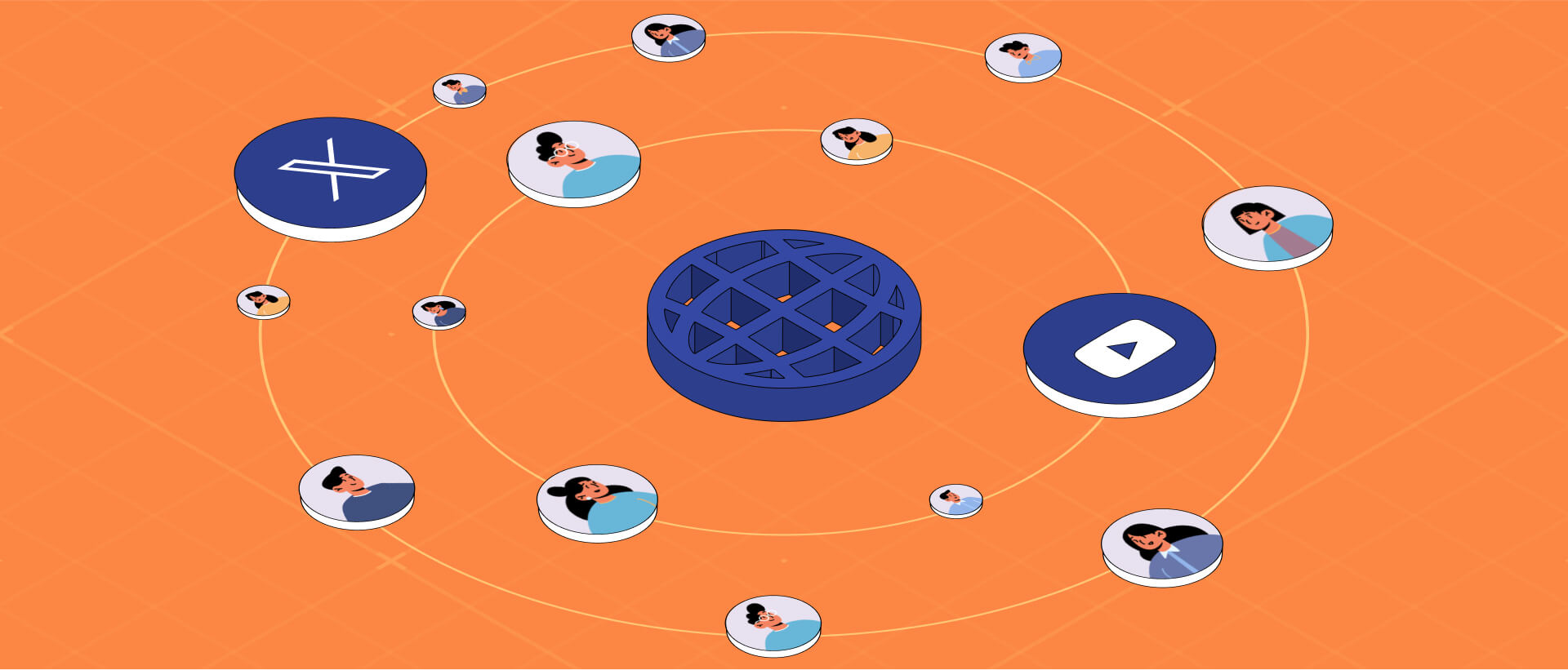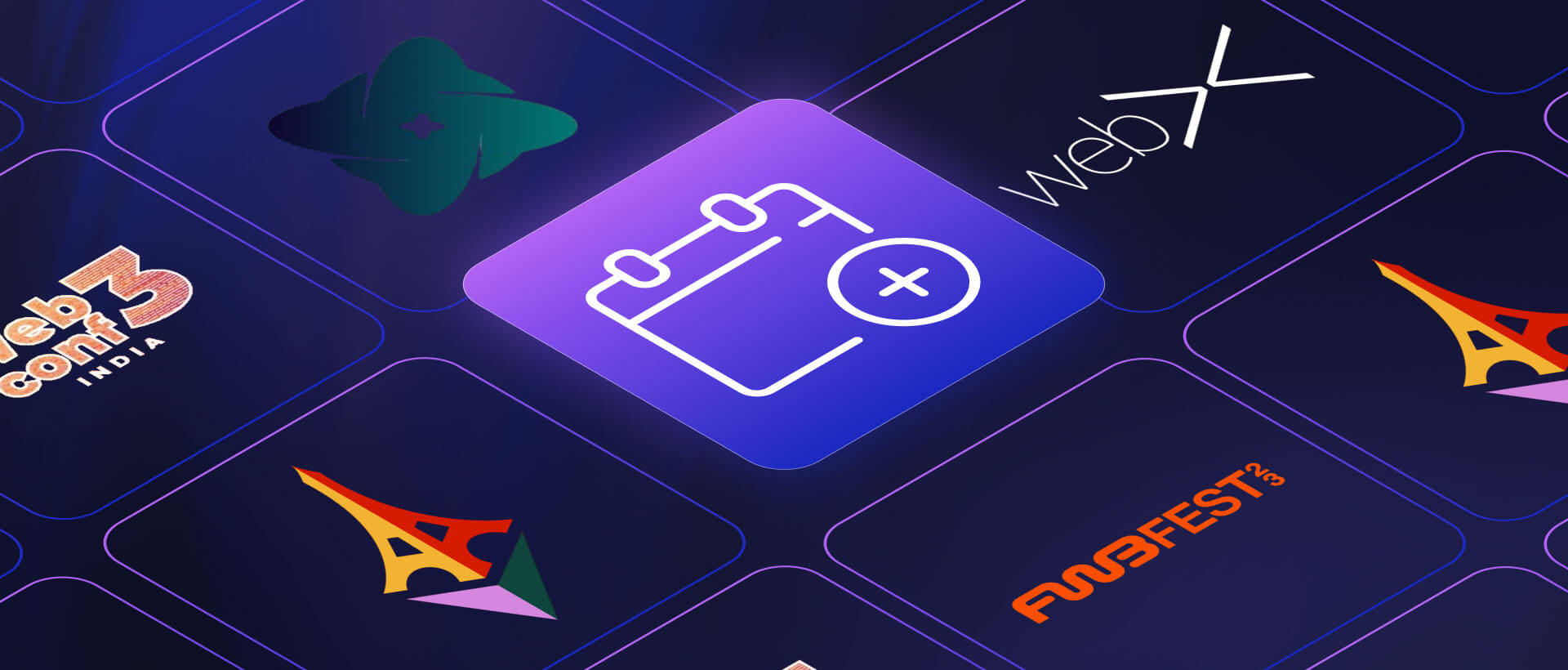It's been an amazing journey for all internet users using the web for decades. While Web 1.0 was a great starting point for the world to experience the power of the World Wide Web, its Web 2.0 unleashed the power of social media platforms connecting us to the long lost contacts and helping us explore new ones. Web 2.0 social media platforms have become indispensable to everyone's lives for over a decade.
But as time progressed, people slowly started realizing the drawbacks of these centralized social media platforms and how they did not own their data, and these centralized "controlled" platforms could change the rules of the game for both users and developers at any given point in time. This led to the demand and development of decentralized social media platforms, also known as the Web3 social media platforms, which allowed users to own their data and kept them a part of rule-making governance, making it truly decentralized. It's necessary to understand the difference between the two versions of decentralized social network media platforms
A Glimpse Of Web 2.0 Social Media Networks

Not long ago, popular social media platforms like Facebook, Instagram, Twitter, and others started the second generation of the Web. Slowly and steadily, they seeped into every personal computer, every browser version and then mobile phones engulfing social media users to spend more time on them. With major features such as allowing content consumers to classify, exchange ideas, and find dynamic information collectively, these traditional social media platforms also facilitated the flow of information between the platform owner and its active users through evaluation, comments, and reviews.
While these Web 2.0 platforms bought in advantages like availability of data around the clock, ease of use, and support for various media formats, they were often criticized for being centralized platforms with opaque data collection and usage policies. These platforms were also often criticized for changing the platform's rules, which impacted the content creators and consumers. These included policy changes around removing people from the platform, removing the ability to monetize an individual’s online content, using moderation practices, changing fee structures, and altering how users view content via algorithm changes. And slowly, as the cons started outnumbering the pros for these centralized social media platforms and networks, the demand for decentralized social media platforms started rising, also marking the start of Web 3.0
Pause Web 2.0 social media platforms, Enter Web3 social media platforms

Web 3.0 is often referred to as a smarter version of Web 2.0 i.e, the intelligent web, version 3 of the internet-based services. Web 3.0 is based on the premise that websites and apps can intercept and process information in a human-like way using various technologies like artificial intelligence, machine learning, blockchain, distributed ledger technology, big data, and many more. Web 3.0 would also mean data would be interlinked and connected in a decentralized way, not more in the hands of centralized companies or organizations.
Just as the core of Web 3.0, Social media platforms based on principles of Web3 promise to provide internet freedom to its community members. Bringing in nearly all the currently missing features from Web 2.0 social media platforms. Some key features include
-
Decentralization of data and protocols
Web 2.0 uses centralized services, servers, and software which require content creators to trust centralized companies to put forward their data and intellectual property to their audience, thus allowing these tech and media industry giants to monetize that data. Many content creators that use these conventional, favourite social media platforms and networks believe these tech giants have too much power to dictate their terms. On the contrary, Web 3.0 is decentralized and peer-to-peer, with no central authority and no single point of failure, enabling content creators to monetize their own data, to which they have a private key.
-
Decentralized governance
One of the biggest flaws of Web 2.0 social network is that the platform's rules are in the hands of the centralized company. Nothing a content creator or audience can do concerning these rules and regulations. This changes in Web 3.0, where decentralization is at heart. Power is not concentrated with central corporate authorities but instead is held by decentralized autonomous organizations, where it's distributed to stakeholders. Anyone holding a governance token, just like a crypto network, will receive the right to vote on propositions and participate in decisions concerning protocols.
-
Redefined data ownership
In the Web 2.0 world, tech giants, platform owners, and service providers own customer data, which they mine and sell data to earn revenue. Consumers willingly swap their personal data for the right to use a platform. For Web 3.0, content is decoupled from Web 2.0 services. This means users owning creator's channels would own and monetize their own data, with payments made directly to blockchain transaction validators, thus making them truly decentralized crypto social media platforms.
-
Trustless and permission-less controls and environments
Web 3.0 purports to be a "trustless" environment where the decentralized data network protocol has built-in protections. A great example is blockchain and distributed ledger technology which is considered trustless and permissionless because no third party oversees ownership where validators validate transactions stored in a public ledger for all to see. These transformed social media would operate in complete transparency with all the features of traditional social media platforms and decentralized platforms.
-
Use smart contract technologies for automation
The idea of Web 3.0 emerged somewhere with the advent of blockchain, smart contracts, and cryptocurrency. These developments enabled fungible crypto coins tokens to be programmed via smart contracts on top of blockchain that execute automatically when a certain condition is met, such as releasing funds. This use case of smart contracts is working out to be a game changer as this would make payments easier. Be it platform fees or just the tip, active users and content creators would directly deal with each other without the need for centralized tech companies that own today's favorite social media platforms.
-
Utilization of private keys for user authentication
When it comes to user authentication and privacy, the current Web 2.0 social media platform rely on user IDs, passwords, and biometric means of authentication like Face ID. Web 3.0 users will hold private keys that unlock access to their records on a blockchain in an anonymous manner. The private key may reside in a ledger, self-hosted wallet, integrated Bitcoin wallet, or any third-party wallet that the platform supports
Top Web3 Social Media Networks That Are Being Talked About
-
Lens Protocol

Lens Protocol defines itself as a Web3 social graph that gives users complete creative and monetary ownership over their data and content. It allows its users to monetize through community-based tools like “mirroring,” its version of retweets, and portability — enabling users to “distribute once, distribute everywhere.” Lens protocol is built on Polygon’s proof-of-stake blockchain, the open-source network also claims to have a low carbon footprint while being a low-cost and secure blockchain. Lens protocol has over 100k active users and has surpassed 12 million gasless transactions. The team is working to bring over 100 applications to market, five of which are already consumer-ready, including Web3 decentralized Twitter alternative Lenster.
-
Steemit

Steemit is among the most organized decentralized apps and a blogging platform that provides features of Web 3.0. Its social network model pays users, including bloggers, for posting their content. As a contributing writer, a user can earn in different cryptocurrencies and tokens while building a community of followers. Unlike its competitors, Steemit has created a vibrant crypto community and is on the path to becoming the leader in Web3 regarding decentralized social networking apps. Moreover, the platform is high on security and privacy while allowing users the flexibility of building and curating their audiences meaningfully.
-
Mastodon

Mastodon is an open-source online network and a completely decentralized social network based on ActivityPub protocol, making it completely interoperable with most existing Web2 conventional social networks such as Twitter or Facebook. Mastodon allows its users to create their content versions or communities, which are known as instances,– meaning anyone can launch their version of Mastodon without having to join the main server cluster – thus providing complete autonomy over content creation and moderation rules within these individual networks while still allowing communication between different networks via federation protocols like ActivityPub protocols which also been used by many large web2 social networks today
-
Minds

Like many others on the list, MINDS is also an open-source social network built on top of the Ethereum blockchain. The platform rewards users in cryptocurrency every time they leave an impression- publish a post or comment on one while also allowing them to connect safely and securely. MINDS has a wide range of features, including private messaging, group chatrooms, live streams, and more, making it a true crypto social media platform. The platform also offers incentivized curation, where content creators are rewarded for creating quality content through upvotes from other users.
Conclude
To conclude, Web3 social media platforms offer a variety of features and advantages over the traditional centralized Web2 platforms. The incapability of Web2 Platforms to provide features such as increased autonomy over content creation and moderation rules, secure payments via cryptocurrency, real-time analytics, smart contracts for frictionless payments between fans and musicians, etc., have played a key role in a lot of audience and demand now moving towards Web3 decentralized social media. With a few platforms already gaining an early advantage, it is just only a matter of time before there will be a rise in more community-driven projects and decentralized platforms, and more users will move to them leaving behind the centralized social media networks


